As discussed here, I was recently fortunate enough to be able to spend a few days evaluating a Phase One IQ4 Achromatic camera, courtesy of Teamwork Digital Ltd here in the UK. This really interested me as it is a medium format (53.4mm x 40.0mm) back side illuminated sensor with no Bayer filter layer. Given my work imaging outside of the visible spectrum, this had a lot of potential, so I wanted to see what it could do. I wont go through all specs of the camera here, but this is prestige piece of imaging equipment and for more information about it head to the Phase One website.
For this test I wanted to be able to see what the camera could do with a given subject looking at it from UV, through the visible to the IR, in effect across the full range of sensitivity. To do this I used a light source which produced light across that range (Bowens GM500 flash units with quartz tubes), a Zeiss UV Sonnar 105mm f4.3 lens, which I have previously mentioned here, and is a very special lens made of quartz and calcium fluoride elements rather than glass, making it suitable for deep UV work. Here’s how the lens looks mounted on the camera.

For a subject, a bunch of flowers from my local florist – Tangerine and Green, Englefield Green. I also included a Colourchecker chart, although as some of you may notice it looks a little odd. I cut the bottom row of white, grey and black tiles off to run in a spectrometer a while back, so it is now just the coloured tiles. Oh, the challenges of science. The images below firstly show the flowers in the visible spectrum (taken on a camera phone) and then in black and white from the IQ4 Achromatic from the UV through to the IR using a range of different filters which are mentioned below each image.
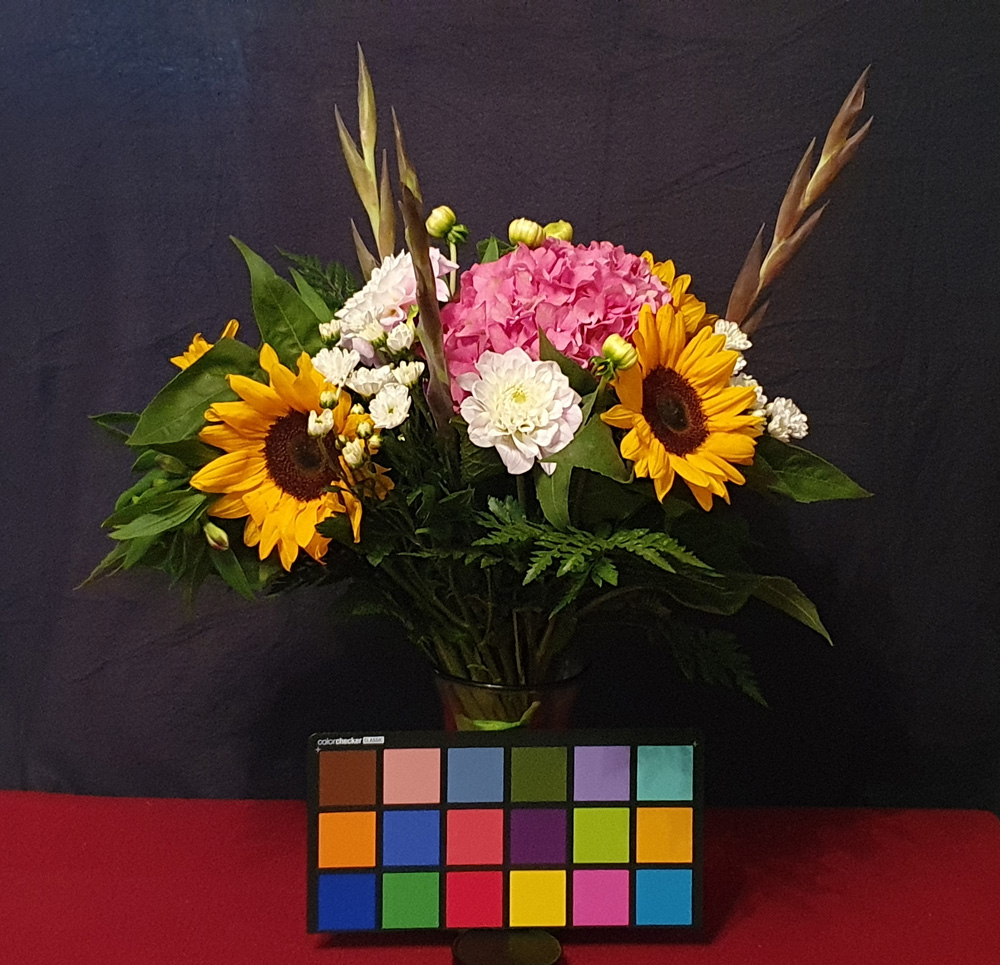
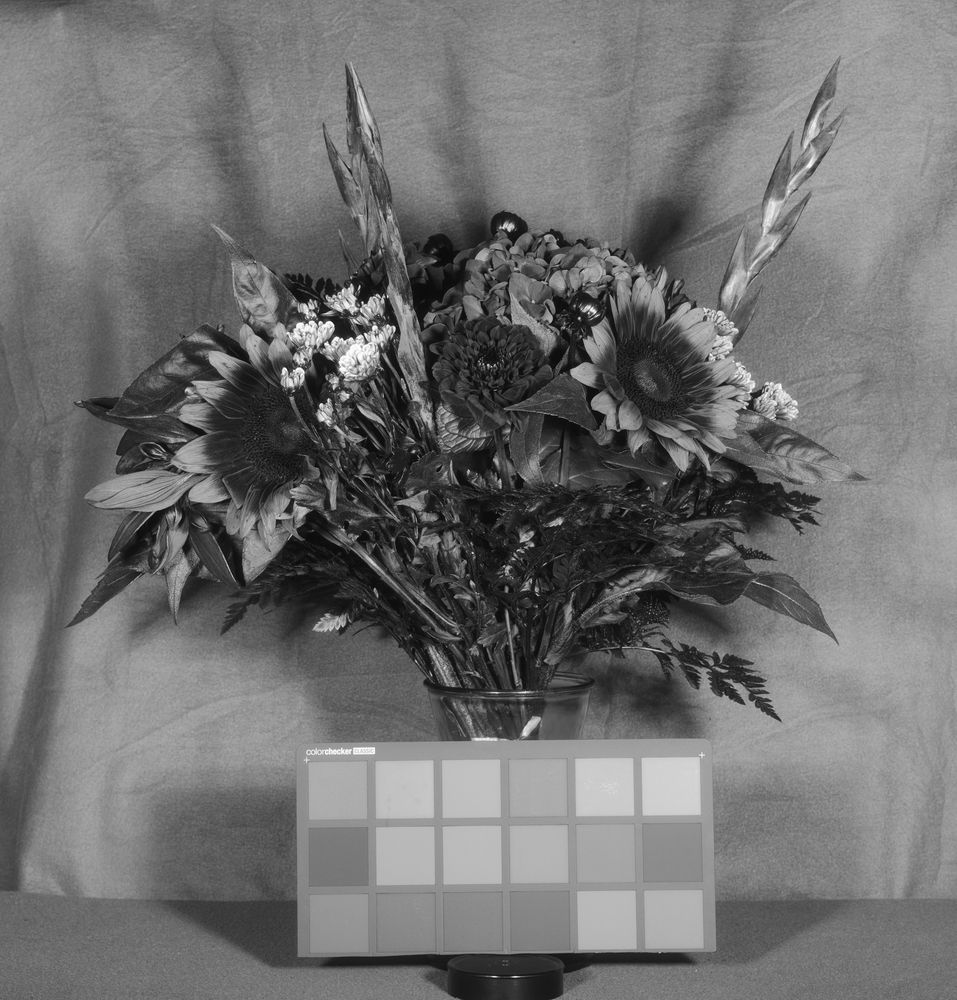
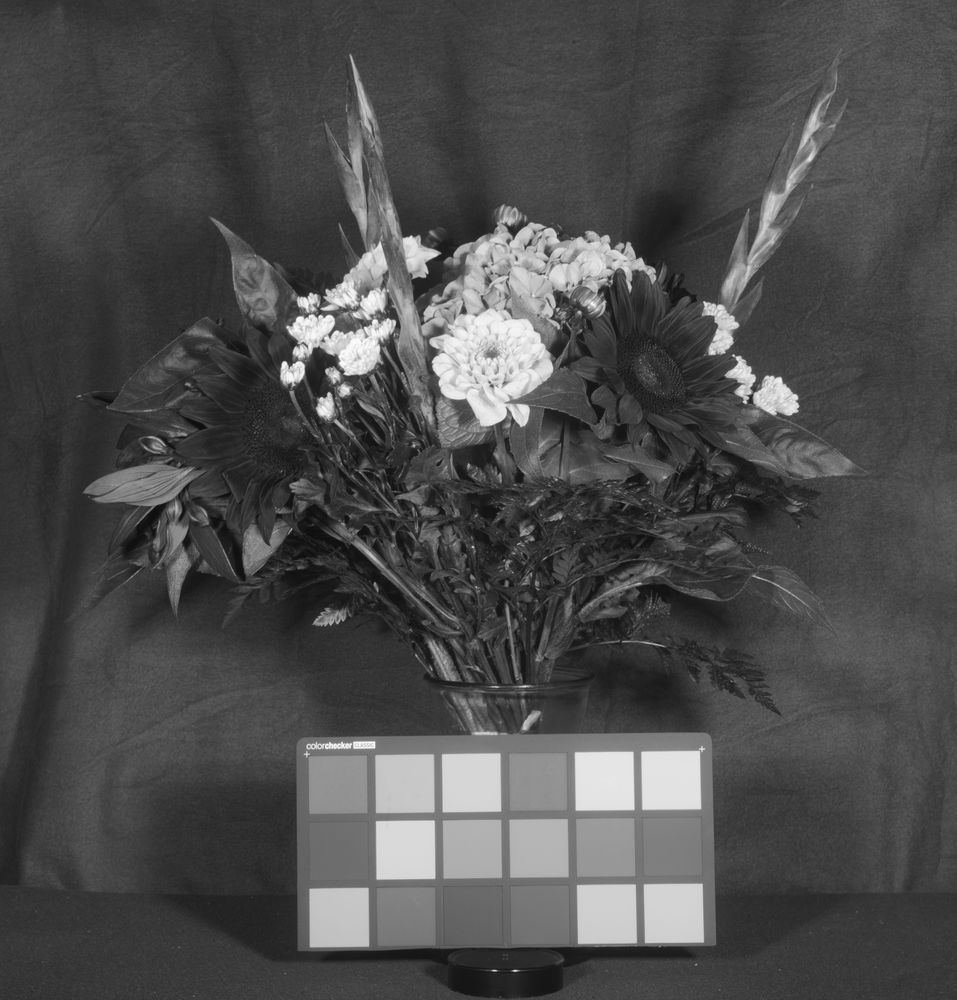

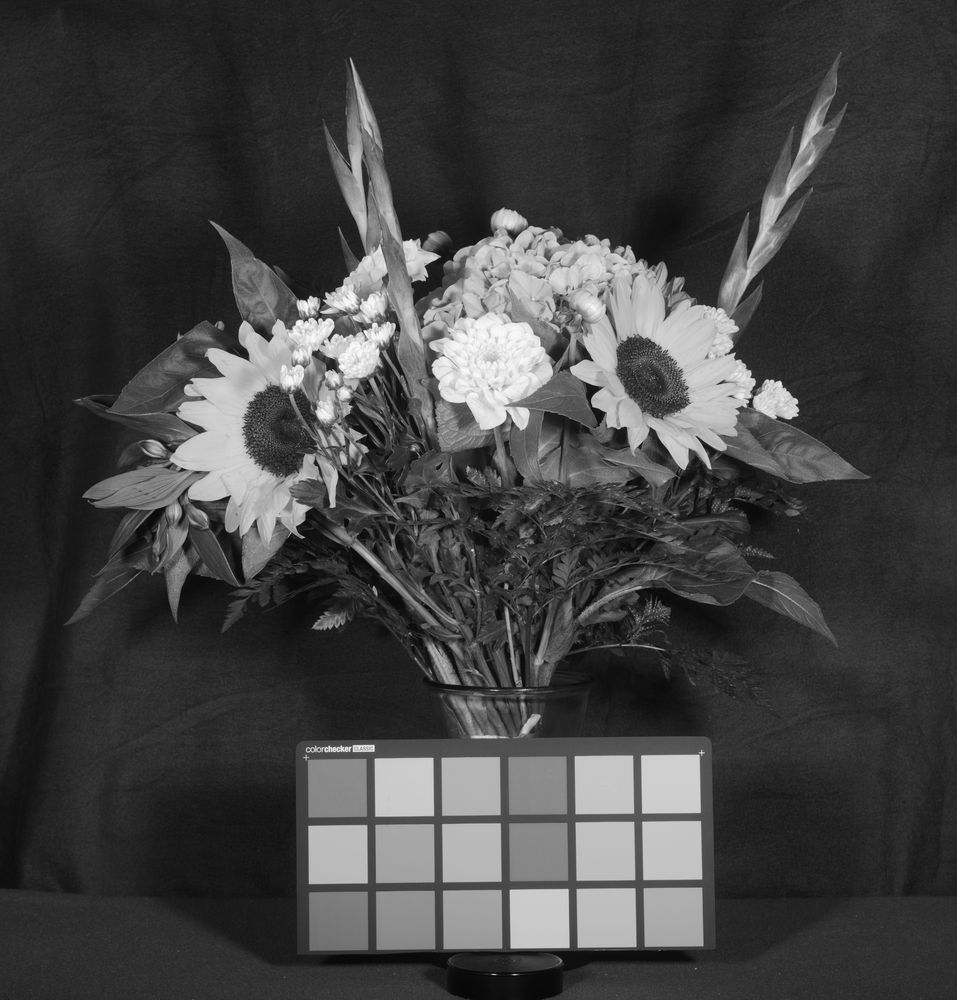
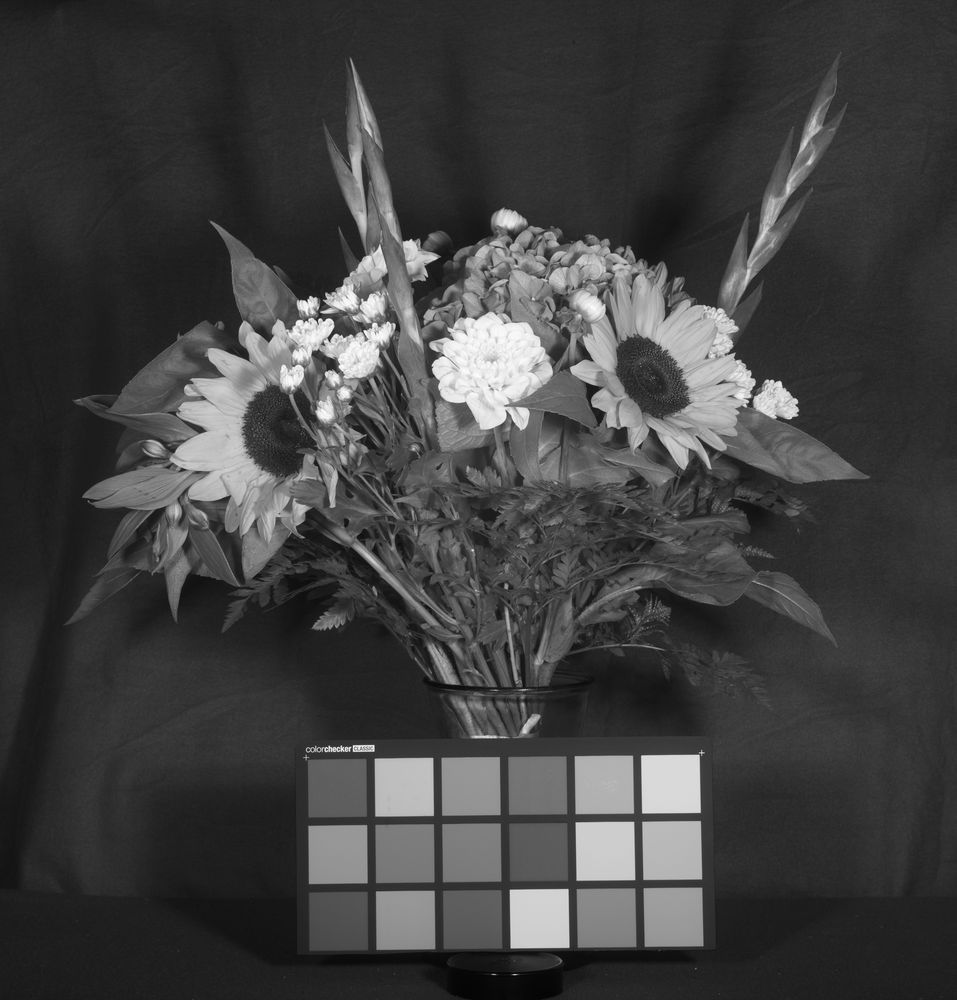
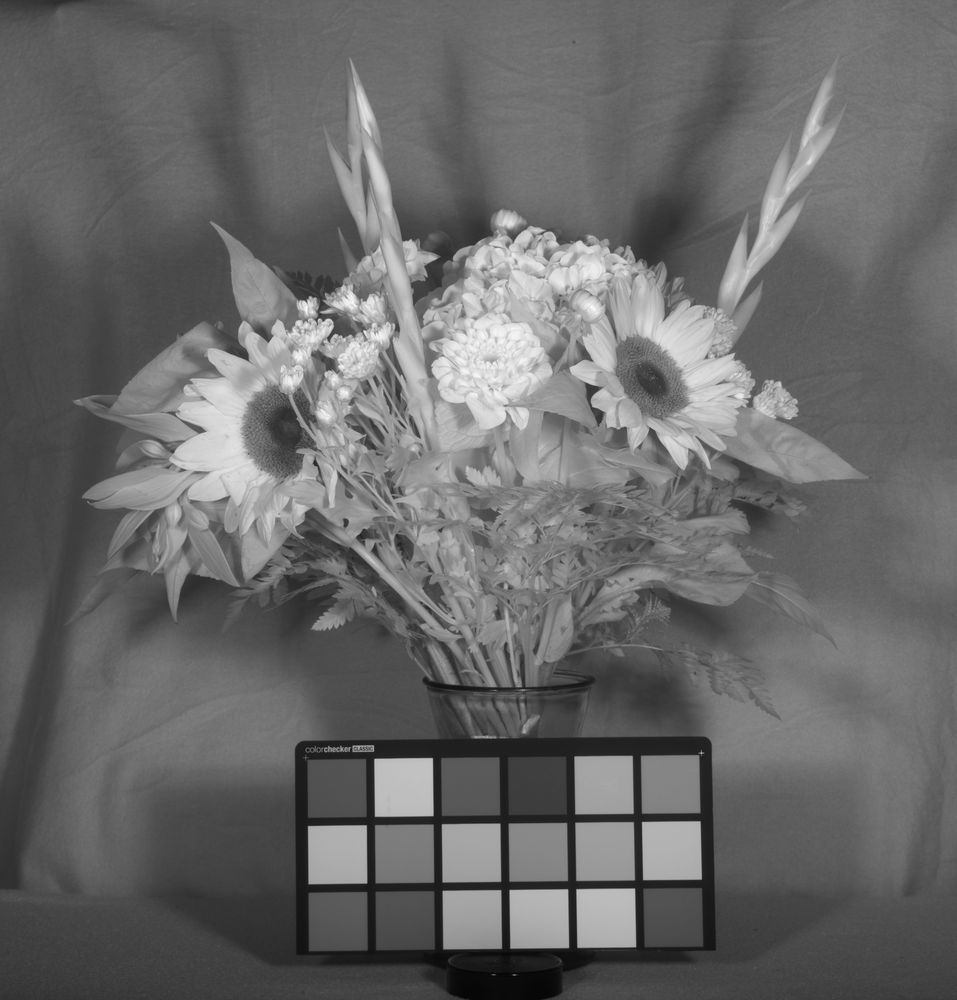
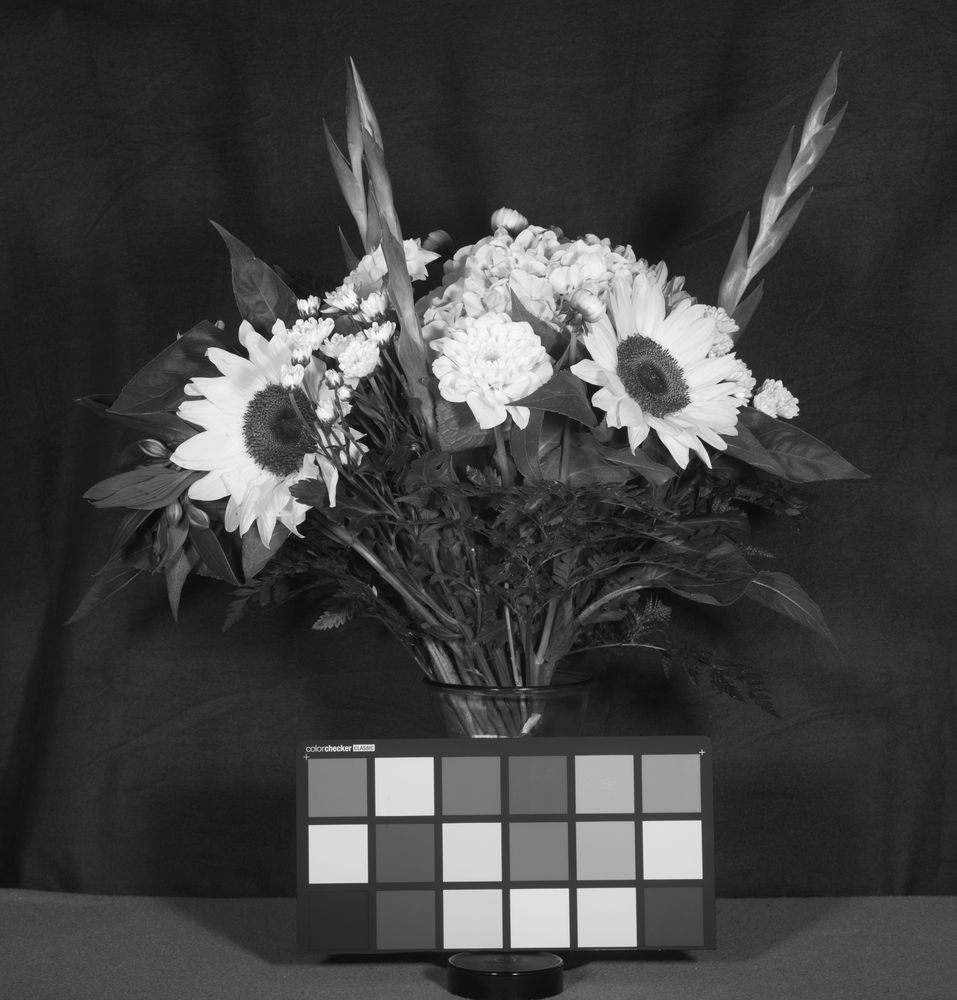
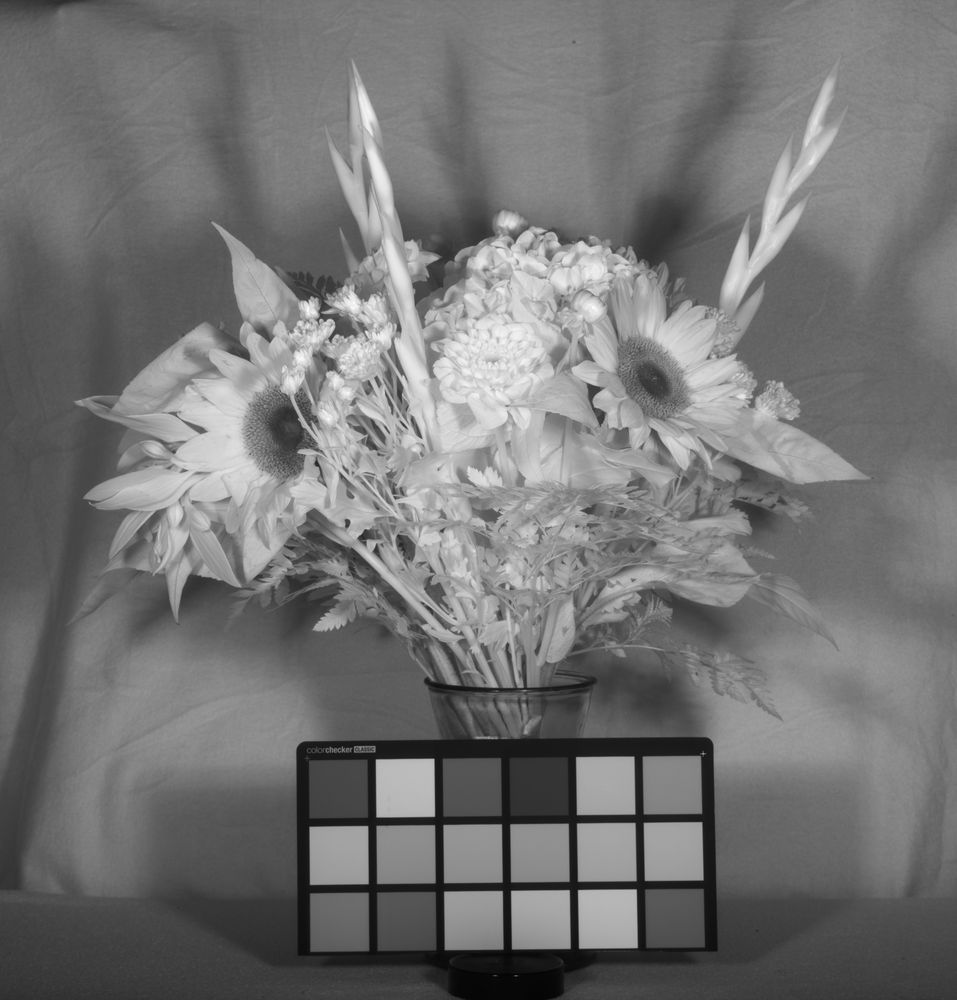
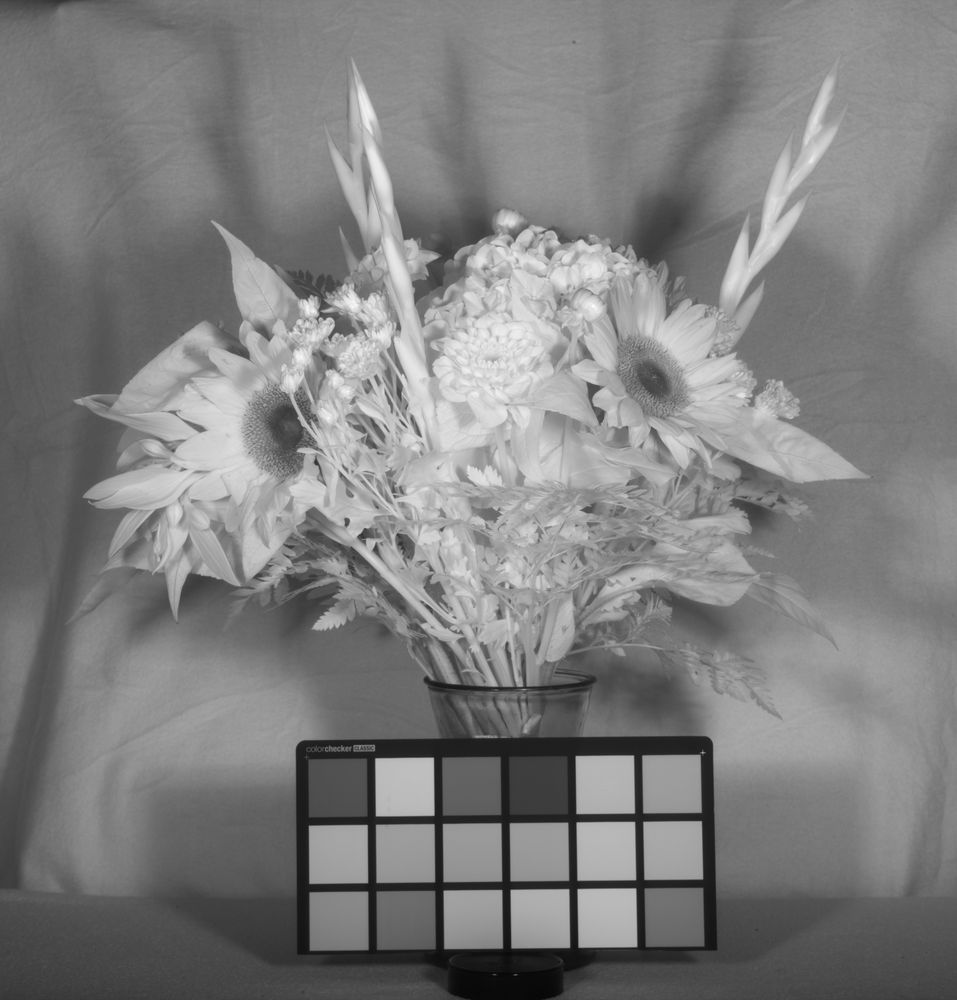
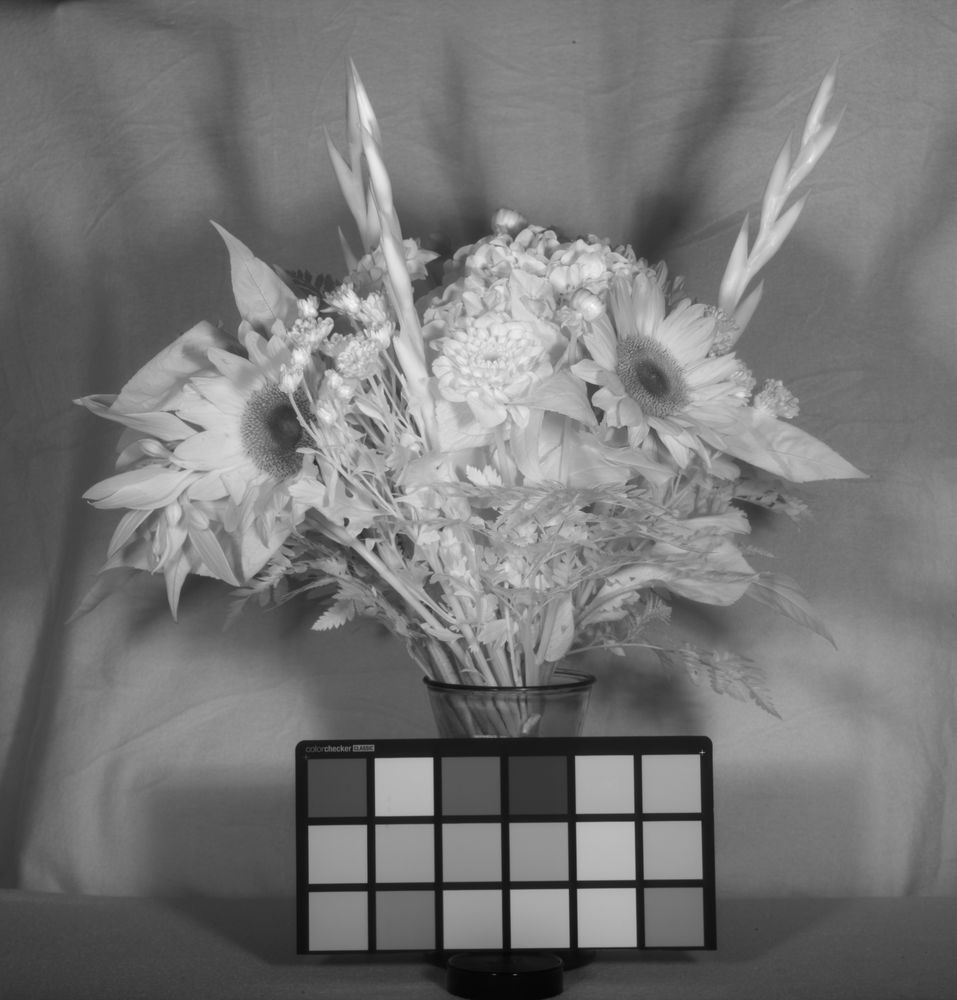
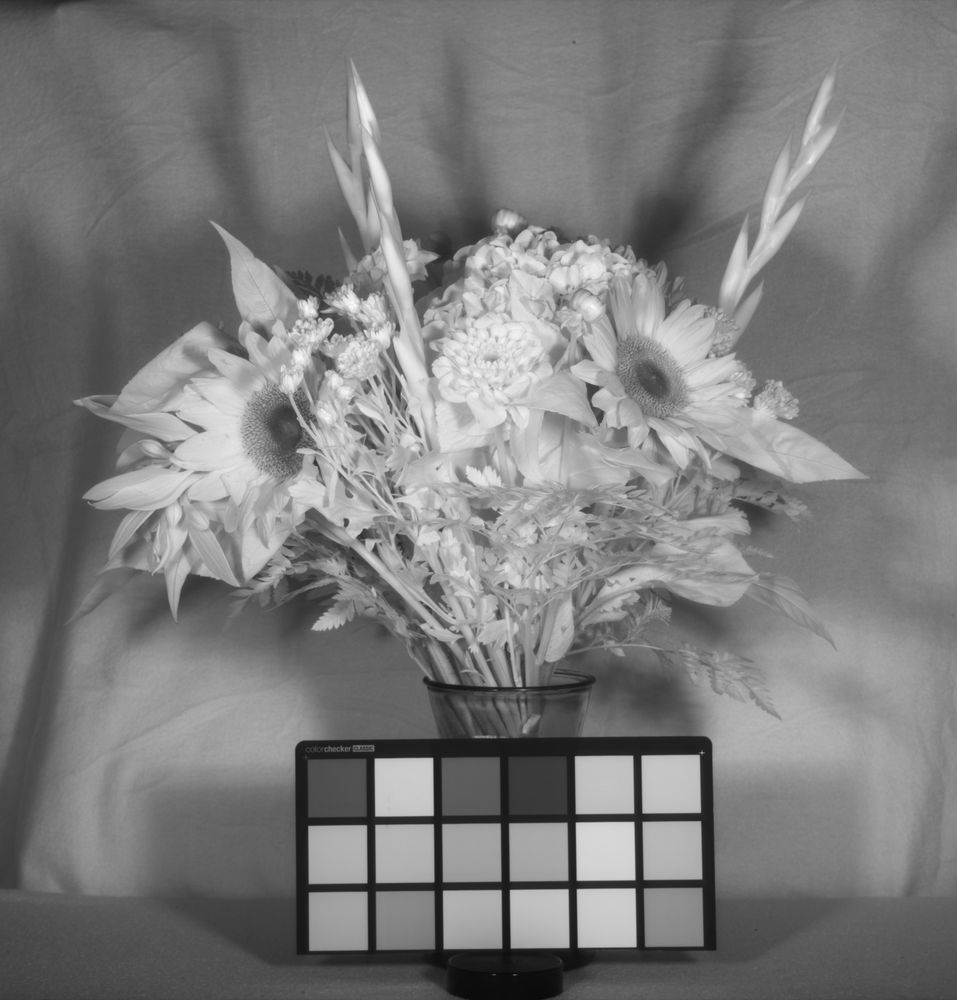
With the images above, they have been reduced hugely in size from the original resolution for sharing on here. Also the flash settings and ISO needed changing for some of the images, especially towards the ends of the wavelength range.
Overall, the flowers demonstrated a huge change their appearance in the different wavebands. The digital collodion image (with the Schott BG18 + BG25 filters) is an interesting one. I’ve written about that filter stack before, here, and it is interesting to see how different the flowers look with it compared to both UV and the broader visible light images. As expected the flowers look fairly similar with the various different IR filters.
Again, very impressed with the Phase One IQ4 Achromatic. It was certainly able to capture images from the UV through the visible and into the IR, when used in combination with suitable lens, filters and light source. I will have more to come from my evaluation of the camera, when I look at its use for landscape photography in the visible and IR regions. Thanks for reading, and if you’d like to know more about this or other aspects of my work, you can reach me here.
